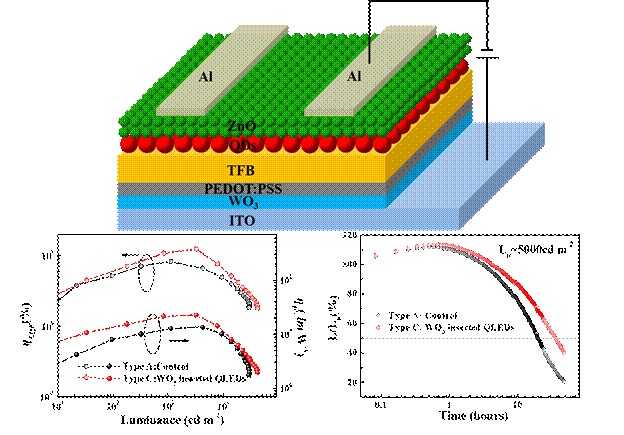Recently, Professor Du Zuliang reported that the use of an inorganic/organic laminated hole transport layer solves the problem that the high efficiency and lifetime of the quantum dot light emitting diodes (QLEDs) cannot be simultaneously achieved when inorganic oxides are used as hole transport layers. The research work is published inACS Appl. Mater. Interfaces, 2018, 10.1021/acsami.8b00770 (SCI, IF=8.097).
https://pubs.acs.org/doi/10.1021/acsami.8b00770

Even though chemical stability metal oxides (MOs), as the substitutes for PEDOT:PSS, have been successfully adopted for improving device stability in solution-processed quantum dot light-emitting diodes (QLEDs), the efficiencies of QLEDs are at a relatively low level. In this work, a novel architecture of QLEDs has been introduced in which inorganic/organic bilayer hole injection layers (HILs) were delicately designed by inserting an amorphous WO3interlayer between PEDOT:PSS and the ITO anode. As a result, the efficiency and operational lifetime of QLEDs were improved simultaneously. The results show that the novel architecture QLEDs relative to conventional PEDOT:PSS-based QLEDs have an enhanced external quantum efficiency (EQE) by a factor of 50%, increasing from 8.31% to 12.47%, meanwhile exhibit the relative long operational lifetime (12551 hours ) and high maximum brightness (>40 000 cd m-2), resulting from a better pathway for hole injection with staircase energy level alignment of the HILs and reduction of surface roughness. Our results demonstrate that the novel architecture QLEDs by using bilayer MO/PEDOT:PSS HILs can achieve long operational lifetime without sacrificing efficiency.